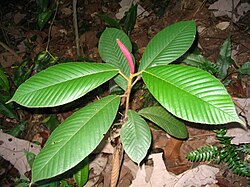| Dipterocarpus baudii | |
|---|---|
 | |
| Scientific classification | |
| Kingdom: | Plantae |
| Clade: | Tracheophytes |
| Clade: | Angiosperms |
| Clade: | Eudicots |
| Clade: | Rosids |
| Order: | Malvales |
| Family: | Dipterocarpaceae |
| Genus: | Dipterocarpus |
| Species: | D. baudii |
| Binomial name | |
| Dipterocarpus baudii | |
| Synonyms | |
Dipterocarpus scortechinii King Contents | |
Dipterocarpus baudii [2] is the accepted name of a tropical forest tree species in the family Dipterocarpaceae; there are no known subspecies. [3] [4]


